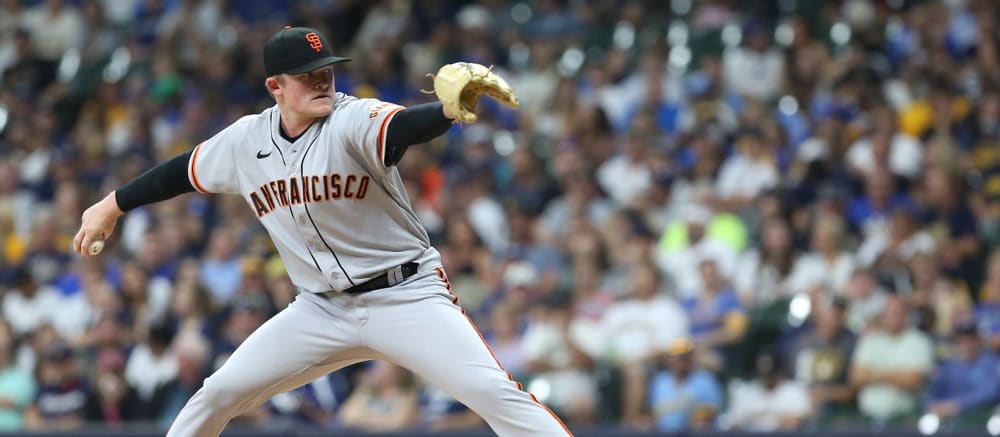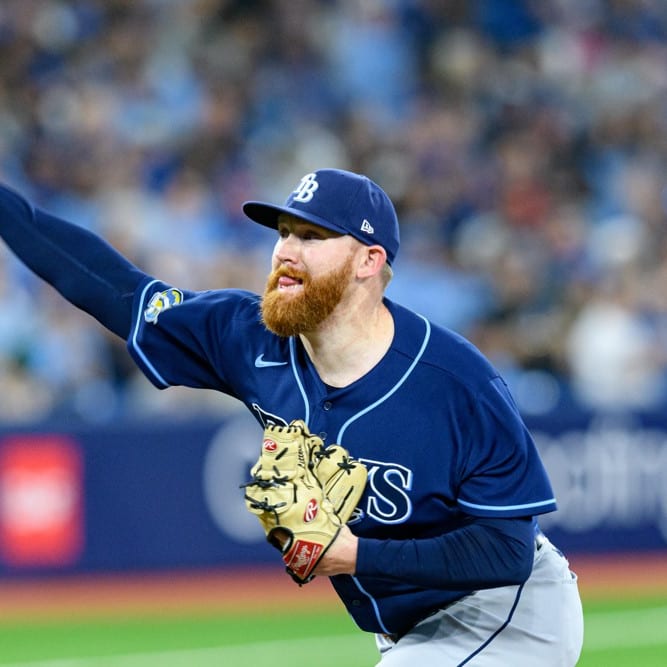This article is part of our MLB Barometer series.
Happy Labor Day to all of you! If you get the chance during a break from your grilling or while you browse holiday weekend sales, take a minute to be grateful for those the holiday celebrates, the people who fought to establish laws and norms we now take for granted, such as the five-day work week and the end of child labor.
From a baseball perspective, it's a good day to learn more about the likes of pioneers like Curt Flood and Marvin Miller, whose efforts brought about the dawn of free agency, shifting the balance of power away from the owners and toward the players, the ones we actually pay to see. (If there are any massive Bob Nutting fans out there, or if any of you play in fantasy owner leagues and couldn't care less about the players themselves, my apologies.)
With that brief festive note out of the way, it's time to take stock of where things stand in the baseball world. With just four weeks left in the season, those of you who are still reading this column and haven't moved onto football are likely either beginning a playoff series or locked into a very tight race at the top of your roto league. Everything becomes magnified with such a short time left in the season. A two-week injury knocks a player out for half his remaining games, the equivalent of a three-month injury in late March. Even a brief day-to-day issue can knock out 10
Happy Labor Day to all of you! If you get the chance during a break from your grilling or while you browse holiday weekend sales, take a minute to be grateful for those the holiday celebrates, the people who fought to establish laws and norms we now take for granted, such as the five-day work week and the end of child labor.
From a baseball perspective, it's a good day to learn more about the likes of pioneers like Curt Flood and Marvin Miller, whose efforts brought about the dawn of free agency, shifting the balance of power away from the owners and toward the players, the ones we actually pay to see. (If there are any massive Bob Nutting fans out there, or if any of you play in fantasy owner leagues and couldn't care less about the players themselves, my apologies.)
With that brief festive note out of the way, it's time to take stock of where things stand in the baseball world. With just four weeks left in the season, those of you who are still reading this column and haven't moved onto football are likely either beginning a playoff series or locked into a very tight race at the top of your roto league. Everything becomes magnified with such a short time left in the season. A two-week injury knocks a player out for half his remaining games, the equivalent of a three-month injury in late March. Even a brief day-to-day issue can knock out 10 percent or more of a player's remaining contributions.
I generally don't pay too much attention to a team's schedule for most of the year, as things largely even out over 162 games, but things can look a lot less even over just four weeks. Take, for example, the list of teams with games remaining at Coors Field:
| Team | Games in Coors Field |
|---|---|
| Rockies | 12 |
| Giants | 6 |
| Dodgers | 3 |
| Nationals | 3 |
At this point in the season, even that lone three-game set at high altitude could be enough to make a National or Dodger slightly more appealing than a player on another team when making a tough decision on the waiver wire, and the fact that the Giants will play nearly a quarter of their remaining games in Denver certainly seems significant.
Who a team has left on the schedule matters, but what also matters is the raw number of games a team has left. Cleveland has 28 games still to play, 21.7 percent more than Boston's 23 remaining games. Over the course of a full season, that would be as if Boston only had 133 games on the schedule while Cleveland played a full 162.
Keep an eye out for those small edges as we head into the home stretch, as those small differences can loom large over such a short period of time. For now, let's move onto a handful of players who have loomed large or shrunk small in recent weeks.
RISERS
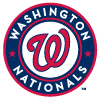 Juan Soto, OF, Nationals: It's hard to truly rise when you're so close to the top like Soto is, but his control of the zone has been so ridiculous lately that I couldn't help but feature him. Walking more than he strikes out is nothing new for the 22-year-old phenom; he did that last season (41:28 BB:K) and in the first half of this year (58:52 BB:K), but his 53:27 BB:K thus far in the second half is something else entirely. He's one walk shy of walking twice as often as he's struck out since the break, and if you zoom in on just his last 17 games, he has 22 walks to go with just six strikeouts. Walks and strikeouts alone don't directly correlate to fantasy value in most formats, but it's hard to be seeing the ball that well without dominant overall offensive numbers, and he's provided those as well. After hitting a modest 11 homers in the first half, he already has 13 in the second, tying him for eighth in the league. He ranks first in second-half wRC+ with a mark of 200, the product of a .333/.513/.653 slash line. I ranked Soto first overall heading into the season, and while he's not going to finish quite that high, I'll be tempted to do so again next year given that Fernando Tatis and Ronald Acuna will come with injury concerns. Whether it's Soto or Vladimir Guerrero who gets the top spot for drafters who are fine with sacrificing a bit of speed with their first-round pick next season will be a very interesting discussion to follow.
Juan Soto, OF, Nationals: It's hard to truly rise when you're so close to the top like Soto is, but his control of the zone has been so ridiculous lately that I couldn't help but feature him. Walking more than he strikes out is nothing new for the 22-year-old phenom; he did that last season (41:28 BB:K) and in the first half of this year (58:52 BB:K), but his 53:27 BB:K thus far in the second half is something else entirely. He's one walk shy of walking twice as often as he's struck out since the break, and if you zoom in on just his last 17 games, he has 22 walks to go with just six strikeouts. Walks and strikeouts alone don't directly correlate to fantasy value in most formats, but it's hard to be seeing the ball that well without dominant overall offensive numbers, and he's provided those as well. After hitting a modest 11 homers in the first half, he already has 13 in the second, tying him for eighth in the league. He ranks first in second-half wRC+ with a mark of 200, the product of a .333/.513/.653 slash line. I ranked Soto first overall heading into the season, and while he's not going to finish quite that high, I'll be tempted to do so again next year given that Fernando Tatis and Ronald Acuna will come with injury concerns. Whether it's Soto or Vladimir Guerrero who gets the top spot for drafters who are fine with sacrificing a bit of speed with their first-round pick next season will be a very interesting discussion to follow.
 Kyle Schwarber, OF, Red Sox: Schwarber already did plenty of rising earlier in the season, hitting 16 homers of an 18-game stretch in June, but that incredible run was abruptly cut short by a hamstring injury in early July. The injury gave reason to believe the run would come to an end, but the Red Sox clearly weren't worried, as they traded for him despite the fact that he was still weeks away from returning from the injured list. While he hasn't maintained that absurd power surge, he still counts as a riser here because of his overall excellent performance immediately following a six-week spell on the sidelines. In 20 games for his new team, he's hit .319/.449/.569 with four homers. A .388 BABIP is undoubtedly inflating that line somewhat, but he's also crushed the ball to the tune of an 18.9 percent barrel rate and has controlled the zone well, walking 19.1 percent of the time to go along with a 21.3 percent strikeout rate. Schwarber did own a strong 13.0 percent walk rate for his career heading into this year but also had a poor 28.0 percent strikeout rate, leading to a .230 batting average. If the reduced strikeout rate he's shown lately holds, he could turn into a true all-around force at the plate.
Kyle Schwarber, OF, Red Sox: Schwarber already did plenty of rising earlier in the season, hitting 16 homers of an 18-game stretch in June, but that incredible run was abruptly cut short by a hamstring injury in early July. The injury gave reason to believe the run would come to an end, but the Red Sox clearly weren't worried, as they traded for him despite the fact that he was still weeks away from returning from the injured list. While he hasn't maintained that absurd power surge, he still counts as a riser here because of his overall excellent performance immediately following a six-week spell on the sidelines. In 20 games for his new team, he's hit .319/.449/.569 with four homers. A .388 BABIP is undoubtedly inflating that line somewhat, but he's also crushed the ball to the tune of an 18.9 percent barrel rate and has controlled the zone well, walking 19.1 percent of the time to go along with a 21.3 percent strikeout rate. Schwarber did own a strong 13.0 percent walk rate for his career heading into this year but also had a poor 28.0 percent strikeout rate, leading to a .230 batting average. If the reduced strikeout rate he's shown lately holds, he could turn into a true all-around force at the plate.
 Robbie Ray, SP, Blue Jays: Few players hurt their reputations more last season than Ray. Among pitchers who threw at least 50 innings, he ranked last in walk rate (17.9 percent) and groundball rate (24.3 percent), leading, unsurprisingly, to an awful 6.62 ERA. Few players helped their reputations more this season than the lefty, however, as he looks almost unrecognizable compared to last year's version. He's raised his groundball rate to a respectable 38.5 percent, but it's his improvement in walk rate that's been easily the most impressive part of his statline, as that was never a strength for him in his good years. This year, he's suddenly walking just 6.4 percent of opposing batters. He hasn't sacrificed any whiffs to get there, as his 32.3 percent strikeout rate is the second-best mark of his career and the fourth-best among qualified starters. Ray is pitching as well as he has all season at the moment, as he set a Blue Jays record by reaching double-digit strikeouts for the fourth consecutive outing Sunday against Oakland, a 6.2-inning gem in which he allowed zero runs on one hit.
Robbie Ray, SP, Blue Jays: Few players hurt their reputations more last season than Ray. Among pitchers who threw at least 50 innings, he ranked last in walk rate (17.9 percent) and groundball rate (24.3 percent), leading, unsurprisingly, to an awful 6.62 ERA. Few players helped their reputations more this season than the lefty, however, as he looks almost unrecognizable compared to last year's version. He's raised his groundball rate to a respectable 38.5 percent, but it's his improvement in walk rate that's been easily the most impressive part of his statline, as that was never a strength for him in his good years. This year, he's suddenly walking just 6.4 percent of opposing batters. He hasn't sacrificed any whiffs to get there, as his 32.3 percent strikeout rate is the second-best mark of his career and the fourth-best among qualified starters. Ray is pitching as well as he has all season at the moment, as he set a Blue Jays record by reaching double-digit strikeouts for the fourth consecutive outing Sunday against Oakland, a 6.2-inning gem in which he allowed zero runs on one hit.
 Logan Webb, SP, Giants: I've featured Webb in this column once already back in late July, as he'd come out of nowhere to post a 3.54 ERA through 61 innings at that point. Since then, he's only gotten better. In his eight starts since that article, he owns an incredible 1.40 ERA and 0.90 WHIP, numbers he's backed up by excellent peripherals including a 29.3 percent strikeout rate, 4.7 percent walk rate and 61.2 percent groundball rate. He hasn't allowed more than two earned runs in any of those eight starts nor in his six prior outings. Over that 14-start stretch, which began back on May 11, his 1.46 ERA leads all pitchers who threw at least 80 innings. It'll be interesting to see just how high his stock soars during next draft season if he keeps any semblance of this form going down the stretch. His ability to keep the ball down at an elite rate while also getting an above-average number of whiffs is truly unique. Since 2002, the first year we have reliable groundball rate data, only 28 qualified starters can match his 60.8 percent groundball rate. Only five of those pitchers have a strikeout rate north of 20 percent, while only Tyson Ross' 25.8 percent strikeout rate in 2015 comes within three ticks of Webb's 27.0 percent mark. We've arguably never seen anybody quite like this.
Logan Webb, SP, Giants: I've featured Webb in this column once already back in late July, as he'd come out of nowhere to post a 3.54 ERA through 61 innings at that point. Since then, he's only gotten better. In his eight starts since that article, he owns an incredible 1.40 ERA and 0.90 WHIP, numbers he's backed up by excellent peripherals including a 29.3 percent strikeout rate, 4.7 percent walk rate and 61.2 percent groundball rate. He hasn't allowed more than two earned runs in any of those eight starts nor in his six prior outings. Over that 14-start stretch, which began back on May 11, his 1.46 ERA leads all pitchers who threw at least 80 innings. It'll be interesting to see just how high his stock soars during next draft season if he keeps any semblance of this form going down the stretch. His ability to keep the ball down at an elite rate while also getting an above-average number of whiffs is truly unique. Since 2002, the first year we have reliable groundball rate data, only 28 qualified starters can match his 60.8 percent groundball rate. Only five of those pitchers have a strikeout rate north of 20 percent, while only Tyson Ross' 25.8 percent strikeout rate in 2015 comes within three ticks of Webb's 27.0 percent mark. We've arguably never seen anybody quite like this.
 Yoshi Tsutsugo, 1B/OF, Pirates: Tsutsugo hit just .197 in his first seasons stateside last year, though there were reasons to not be completely out on him aside from the obvious fact that he was attempting to adjust to a new league and a new country in the middle of a global pandemic. He still managed a nearly league-average 98 wRC+ despite that low average, thanks to a strong 14.1 percent walk rate and an above-average .197 ISO. For much of this season, however, it looked as though his follow-up act was going to be considerably worse, as he hit just .155/.256/.194 with zero homers across 118 plate appearances with the Rays and Dodgers. After signing with the Pirates in mid-August, however, he's turned things around dramatically. In 19 games for his new team, he's hit an impressive .267/.320/.844 with seven homers, a power surge he's backed up with a 20.0 percent barrel rate. While that's a small sample, Tsutsugo was dominant in Japan, hitting .285/.382/.528 across 10 NPB seasons and averaging 35 homers over his last four seasons, so it's not as if this power surge is coming completely out of nowhere. He still doesn't quite have an everyday role, but the Pirates don't have much else going on right now, so his at-bats should increase going forward if he remains remotely this hot.
Yoshi Tsutsugo, 1B/OF, Pirates: Tsutsugo hit just .197 in his first seasons stateside last year, though there were reasons to not be completely out on him aside from the obvious fact that he was attempting to adjust to a new league and a new country in the middle of a global pandemic. He still managed a nearly league-average 98 wRC+ despite that low average, thanks to a strong 14.1 percent walk rate and an above-average .197 ISO. For much of this season, however, it looked as though his follow-up act was going to be considerably worse, as he hit just .155/.256/.194 with zero homers across 118 plate appearances with the Rays and Dodgers. After signing with the Pirates in mid-August, however, he's turned things around dramatically. In 19 games for his new team, he's hit an impressive .267/.320/.844 with seven homers, a power surge he's backed up with a 20.0 percent barrel rate. While that's a small sample, Tsutsugo was dominant in Japan, hitting .285/.382/.528 across 10 NPB seasons and averaging 35 homers over his last four seasons, so it's not as if this power surge is coming completely out of nowhere. He still doesn't quite have an everyday role, but the Pirates don't have much else going on right now, so his at-bats should increase going forward if he remains remotely this hot.
 Ranger Suarez, SP, Phillies: Suarez has had quite the season. Coming off a year in which he battled COVID-19 and was blown up for nine runs in just four innings of work, he didn't even make his season debut until early May. He quickly emerged as one of the few reliable relievers in the Phillies' bullpen, and while his 1.12 ERA in 40.1 innings of relief was a clear overachievement judging by his 3.32 FIP and 3.36 xFIP, he was still trustworthy enough to earn his first four career saves in July. After the Phillies acquired a closer in Ian Kennedy at the deadline, they saw a greater need for Suarez in the rotation, the role in which he's spent the majority of his professional career. His first four starts were quite shaky, despite a 2.45 ERA, as he didn't reach five innings in any of them and recorded an 11:10 K:BB. His last three outings have been genuinely encouraging, however. He's lasted at least five innings in all three, allowing a combined two runs while striking out 28.4 percent of opposing batters. If he can keep up the elevated strikeout numbers, he'll be quite an interesting option down the stretch, as he'd been merely average in that category but elite in groundball rate, posting a 63.3 percent mark for the year.
Ranger Suarez, SP, Phillies: Suarez has had quite the season. Coming off a year in which he battled COVID-19 and was blown up for nine runs in just four innings of work, he didn't even make his season debut until early May. He quickly emerged as one of the few reliable relievers in the Phillies' bullpen, and while his 1.12 ERA in 40.1 innings of relief was a clear overachievement judging by his 3.32 FIP and 3.36 xFIP, he was still trustworthy enough to earn his first four career saves in July. After the Phillies acquired a closer in Ian Kennedy at the deadline, they saw a greater need for Suarez in the rotation, the role in which he's spent the majority of his professional career. His first four starts were quite shaky, despite a 2.45 ERA, as he didn't reach five innings in any of them and recorded an 11:10 K:BB. His last three outings have been genuinely encouraging, however. He's lasted at least five innings in all three, allowing a combined two runs while striking out 28.4 percent of opposing batters. If he can keep up the elevated strikeout numbers, he'll be quite an interesting option down the stretch, as he'd been merely average in that category but elite in groundball rate, posting a 63.3 percent mark for the year.
FALLERS
 Adam Frazier, 2B/OF, Padres: Frazier's July move from the Pirates to the Padres was supposed to be a boost to his fantasy value, as he was joining a roster much more talented than the one he left behind in Pittsburgh, while San Diego's pitcher-friendly park wasn't a significant downgrade for a player who'd spent his career hitting in similar conditions. The problem with that idea was that he was clearly playing over his head in the first portion of the season. His .324/.388/.448 slash line prior to the trade was well above his .273/.336/.413 line over his first five years in the league, with a .359 BABIP (which again came in well above his career average of .303) deserving much of the credit. His quality of contact heading up to the deal wasn't any better than it had been previously in his career, with his miniscule 1.2 percent barrel rate coming in at half of his 2.4 percent career mark over the previous five seasons. Things have only gotten worse since his move to the West Coast. He's hitting a miserable .227/.292/.264 as a Padre and has yet to barrel a single ball. His .269 BABIP should rise going forward, allowing the quality of his teammates to show up a bit more in his numbers, but nothing about the deal changes the fact that he makes some of the weakest contact in the league.
Adam Frazier, 2B/OF, Padres: Frazier's July move from the Pirates to the Padres was supposed to be a boost to his fantasy value, as he was joining a roster much more talented than the one he left behind in Pittsburgh, while San Diego's pitcher-friendly park wasn't a significant downgrade for a player who'd spent his career hitting in similar conditions. The problem with that idea was that he was clearly playing over his head in the first portion of the season. His .324/.388/.448 slash line prior to the trade was well above his .273/.336/.413 line over his first five years in the league, with a .359 BABIP (which again came in well above his career average of .303) deserving much of the credit. His quality of contact heading up to the deal wasn't any better than it had been previously in his career, with his miniscule 1.2 percent barrel rate coming in at half of his 2.4 percent career mark over the previous five seasons. Things have only gotten worse since his move to the West Coast. He's hitting a miserable .227/.292/.264 as a Padre and has yet to barrel a single ball. His .269 BABIP should rise going forward, allowing the quality of his teammates to show up a bit more in his numbers, but nothing about the deal changes the fact that he makes some of the weakest contact in the league.
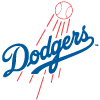 Chris Taylor, 2B/SS/OF, Dodgers: For most of this year, Taylor was tracking toward the best season of his career. Through Aug. 8, he'd hit .286/.377/.496 with 17 homers and 11 steals, with his .873 OPS representing a career high. He's been in an extended rut since that point, however, hitting just .167/.245/.274 over 23 games, including a 1-for-23 showing across his last seven contests. Things have gone south for him in just about every way. He's always had slightly elevated strikeout rates, but he's suddenly striking out 37.2 percent of the time over that 23-game stretch. When he does make contact, it hasn't been good contact. He has just three barrels over that span, good for a barrel rate of 6.0 percent, just over half of the 11.3 percent barrel rate he maintained prior to that slump. Taylor has remained in his near-everyday role for now, starting eight of the Dodgers' last nine games, but the team has a deep and flexible roster, so a dip in playing time can't be ruled out if he continues to look lost at the plate.
Chris Taylor, 2B/SS/OF, Dodgers: For most of this year, Taylor was tracking toward the best season of his career. Through Aug. 8, he'd hit .286/.377/.496 with 17 homers and 11 steals, with his .873 OPS representing a career high. He's been in an extended rut since that point, however, hitting just .167/.245/.274 over 23 games, including a 1-for-23 showing across his last seven contests. Things have gone south for him in just about every way. He's always had slightly elevated strikeout rates, but he's suddenly striking out 37.2 percent of the time over that 23-game stretch. When he does make contact, it hasn't been good contact. He has just three barrels over that span, good for a barrel rate of 6.0 percent, just over half of the 11.3 percent barrel rate he maintained prior to that slump. Taylor has remained in his near-everyday role for now, starting eight of the Dodgers' last nine games, but the team has a deep and flexible roster, so a dip in playing time can't be ruled out if he continues to look lost at the plate.
 Randal Grichuk, OF, Blue Jays: Unlike Taylor, Grichuk actually has begun losing playing time, starting just three of Toronto's six games last week. It's not hard to see why, as he's been in a pretty serious slump since late July, hitting just .163/.264/.283 over his last 33 games. It hasn't been all bad for him over that stretch, as his 23.6 percent strikeout rate during that run is only slightly worse than the 21.1 percent mark he owned prior to that point, while his 11.3 percent walk rate during his slump is more than double his career mark of 5.6 percent. A .197 BABIP is undoubtedly part of the problem, but that seems to be a result of the fact that he's stopped hitting the ball with much authority. He's hitting the ball in the air but not hitting it very hard, leading to a 2.9 percent barrel rate. The season overall has been a disappointing one for Grichuk, whose 88 wRC+ is the lowest of his eight-year career. The Blue Jays' roster is deep enough on the offensive side that it's possible his playing time remains reduced heading into next season.
Randal Grichuk, OF, Blue Jays: Unlike Taylor, Grichuk actually has begun losing playing time, starting just three of Toronto's six games last week. It's not hard to see why, as he's been in a pretty serious slump since late July, hitting just .163/.264/.283 over his last 33 games. It hasn't been all bad for him over that stretch, as his 23.6 percent strikeout rate during that run is only slightly worse than the 21.1 percent mark he owned prior to that point, while his 11.3 percent walk rate during his slump is more than double his career mark of 5.6 percent. A .197 BABIP is undoubtedly part of the problem, but that seems to be a result of the fact that he's stopped hitting the ball with much authority. He's hitting the ball in the air but not hitting it very hard, leading to a 2.9 percent barrel rate. The season overall has been a disappointing one for Grichuk, whose 88 wRC+ is the lowest of his eight-year career. The Blue Jays' roster is deep enough on the offensive side that it's possible his playing time remains reduced heading into next season.
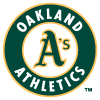 Sean Manaea, SP, Athletics: For most of his career, Manaea succeeded despite a relative lack of whiffs, as his 6.1 percent walk rate prior to this season had proven to be enough to offset his 19.7 percent strikeout rate, leading to a 3.85 ERA. Through the end of July this year, it looked like the lefty was finding a new level. He cruised to a 3.01 ERA in 21 starts over that stretch, combining his usual low walk rate (5.8 percent) with a suddenly strong 27.2 percent strikeout rate. In five August starts, however, his ERA spiked to 9.90, and while a .365 BABIP may deserve some of the blame for that, he also saw his strikeout rate come crashing back down to 19.0 percent. He also developed a sudden homer problem, giving up eight homers in the month including a pair of three-homer games. It's possible Manaea has already righted the ship, as he struck out nine batters while allowing just two runs in seven innings in his last time out against the Blue Jays, but it wouldn't be a surprise if he continues to fade down the stretch. He's already made 27 starts this season after making a total of 24 across all levels over the past two seasons combined, as he missed much of 2019 while recovering from shoulder surgery before the pandemic shrunk everyone's workloads last year.
Sean Manaea, SP, Athletics: For most of his career, Manaea succeeded despite a relative lack of whiffs, as his 6.1 percent walk rate prior to this season had proven to be enough to offset his 19.7 percent strikeout rate, leading to a 3.85 ERA. Through the end of July this year, it looked like the lefty was finding a new level. He cruised to a 3.01 ERA in 21 starts over that stretch, combining his usual low walk rate (5.8 percent) with a suddenly strong 27.2 percent strikeout rate. In five August starts, however, his ERA spiked to 9.90, and while a .365 BABIP may deserve some of the blame for that, he also saw his strikeout rate come crashing back down to 19.0 percent. He also developed a sudden homer problem, giving up eight homers in the month including a pair of three-homer games. It's possible Manaea has already righted the ship, as he struck out nine batters while allowing just two runs in seven innings in his last time out against the Blue Jays, but it wouldn't be a surprise if he continues to fade down the stretch. He's already made 27 starts this season after making a total of 24 across all levels over the past two seasons combined, as he missed much of 2019 while recovering from shoulder surgery before the pandemic shrunk everyone's workloads last year.

